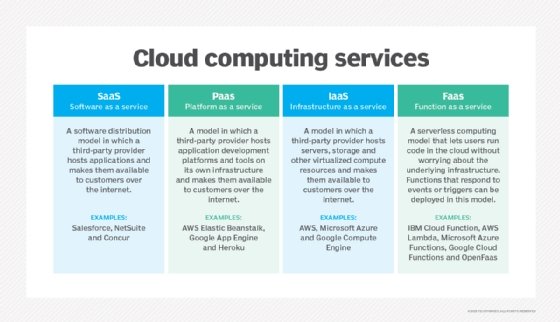Comprehensive Cloud Services: Boost Performance and Protection for Your Business
Wiki Article
Achieve Seamless Scalability With Cloud Provider
In the ever-evolving landscape of cloud services, attaining seamless scalability stands as a foundation for contemporary companies seeking to remain adaptable and affordable. The quest for seamless scalability with cloud solutions introduces a world of opportunities for those eager to embrace the transformative power of vibrant resource management.Advantages of Cloud Scalability
Cloud scalability supplies organizations the versatility to dynamically adjust resources based upon need, making sure ideal efficiency and price performance. One vital benefit is the ability to range sources up or down rapidly in action to rising and fall work. This dexterity enables companies to fulfill transforming consumer needs without over-provisioning sources, eventually leading to cost financial savings. Scalability also boosts efficiency by ensuring that systems can manage boosted traffic or work without experiencing downtime or slowdowns. By successfully alloting sources, companies can preserve high degrees of efficiency during peak times without unnecessary expenses throughout quieter periods. Additionally, cloud scalability promotes development and experimentation by allowing services to easily examine originalities and range them as needed. This flexibility urges a culture of continual improvement and adaptation, allowing organizations to stay competitive in a quickly evolving market landscape. Ultimately, the advantages of cloud scalability prolong past expense savings to encompass improved efficiency, agility, and technology.Trick Features for Scaling
Efficient scaling in cloud services depends on vital functions that allow companies to readjust sources dynamically based upon need. One essential attribute for scaling is elasticity, permitting sources to scale up or down in feedback to varying work. This guarantees that organizations can satisfy efficiency requirements without over-provisioning sources. One more essential function is scalability, enabling systems to manage raised work by including resources perfectly. This attribute is crucial for suiting growth without jeopardizing efficiency. Furthermore, automation plays an essential role in scaling by automating the provisioning and de-provisioning of resources based upon predefined policies. Automation decreases human treatment, boosts efficiency, and makes sure quick response to changing demands. Surveillance and analytics devices are also important for scaling, giving understandings right into resource application, performance metrics, and prospective bottlenecks. These tools make it possible for companies to optimize and make educated choices source allotment for efficient scaling. Overall, these essential functions collectively empower organizations to achieve seamless scalability in cloud services.Applying Auto-Scaling Techniques
To efficiently optimize source appropriation and adapt to differing work, organizations should purposefully carry out auto-scaling techniques in their cloud services infrastructure. Auto-scaling allows systems to instantly readjust the number of calculate sources based on real-time need. There are different auto-scaling strategies that companies can use, such as predictive scaling, which makes use of historical data to anticipate future source needs, and responsive scaling, which reacts to present workload changes.
Ideal Practices for Scalability
For companies aiming to enhance their scalability in cloud solutions, applying finest methods is vital for optimal efficiency and source administration. One key ideal practice is developing applications with a microservices architecture. This strategy breaks down applications into smaller, independent solutions that can be released, upgraded, and scaled independently, permitting higher versatility and scalability.Another important technique is using containerization technology, such as Docker or Kubernetes. Containers enable the product packaging of applications and their reliances into separated systems, making it simpler to scale components separately and release them constantly across various atmospheres.
In addition, implementing automated deployment and framework as code (IaC) can streamline scalability initiatives (linkdaddy cloud services). Automation devices like Terraform or Ansible aid in provisioning and managing resources effectively, lowering hands-on errors and allowing quick scalability
In addition, monitoring efficiency metrics, establishing alerts, and carrying out regular capability preparation are important methods to guarantee aggressive scalability management. By adhering to these finest methods, organizations can accomplish smooth scalability in their cloud services while enhancing efficiency and source utilization.
Surveillance Efficiency Metrics
When evaluating the performance of cloud solutions scalability, closely monitoring efficiency metrics is crucial for ensuring optimum capability and resource allotment. By continually tracking crucial efficiency signs (KPIs) such her comment is here as response times, latency, resource, and throughput use, companies can obtain valuable insights into the health and performance of their cloud framework. Monitoring performance metrics permits the early detection of potential traffic jams or problems that can impact scalability, enabling aggressive procedures to be required to address them prior to they intensify.

Conclusion
In verdict, attaining smooth scalability with cloud services is essential for organizations to maximize efficiency, improve innovation, and preserve high efficiency degrees during peak times. By leveraging the benefits of cloud scalability, applying auto-scaling techniques, utilizing key attributes such as elasticity and automation, and adhering to best techniques like application style and efficiency monitoring, services can effectively scale their systems while maximizing resource utilization and efficiency.The pursuit for smooth scalability with cloud services reveals a world of possibilities for those eager to welcome the transformative power of vibrant resource monitoring.
Cloud scalability uses organizations the flexibility to dynamically adjust sources based on demand, ensuring optimum performance and price effectiveness. Another key function is scalability, enabling systems to take care of enhanced work by including sources perfectly.For companies aiming to enhance their scalability in cloud solutions, carrying out finest practices is critical for ideal efficiency and source administration.When analyzing the performance of cloud services scalability, closely keeping an eye on my review here performance metrics is important for making sure optimum performance and resource appropriation.
Report this wiki page